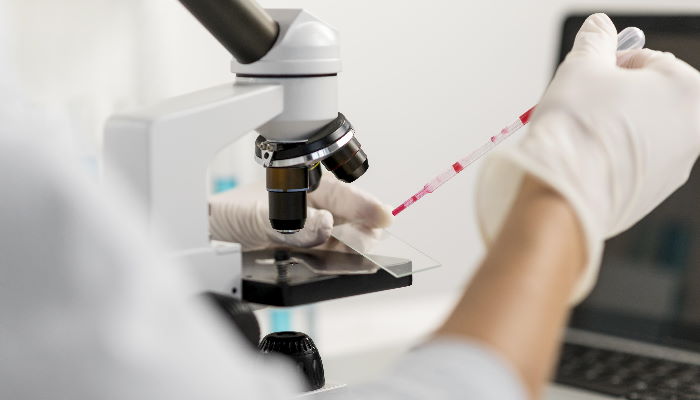
Donna foto creata da freepik - it.freepik.com
Tests for intolerances are a topic that has involved great interest in recent years. The market knows this and here come out numerous tests, home kits and proposals for solutions (protocols / diets / sale of products). The topic is very hot and must be addressed carefully and scientifically.
I am sorry to give a disappointment to many people, but in most cases we are faced with tests without any support of scientific validity.
I'm going straight to the point by listing those that are useless tests and those that are, instead, reliable tests for intolerances (few).
Before reading the tests to diagnose allergies or food skills, I invite you to read, if you have not yet done so, the article about the difference between allergies and intolerances.
Unreliable Tests For Intolerances
And NOT Valid Scientifically (Updated to 2021)
- Electrodermal tests (EAV, VEGA test, Sarm test, Biostrength test):
All equipment used here does not meet certain scientific standards. All the studies carried out agree that these tests have no diagnostic validity and that the results are completely random.
- Cytotoxic tests (CYTOTEST):
A very old test. In numerous studies it has been shown the non-reproducibility of the test that fails to discriminate patients actually allergic from negatives. In addition, the test brought different results in the same patient when performed at different times. Over the years we have tried to improve and automate this method but without great results. The Academy of Allergy has declared it as an unreliable test.
- Applied kinesiology:
There are no data and studies to support this test: this test is at the limit of science fiction!
- Provocation and Neutralization Test (intradermal and sublingual):
Non-reproducibility of the results and is potentially dangerous in subjects who have real allergies.
- Determination of IGg 4 specific to food:
A method currently widely practiced and easy to access in pharmacies or analysis laboratories. In fact, numerous studies have clearly shown that it is an unreliable test and without any diagnostic importance. This test returns nothing more than a simple physiological reaction of the immune system to exposure to the components present in food. Positive Ig4 are also found in subjects who have never complained of problems and who are not actually allergic. It is also a potentially dangerous test because it does not allow to distinguish subjects who have a true IgE-mediated allergy exposing them to great risks in the event that the real allergens responsible are not correctly identified.
- Bioresonance:
No relevance and no proven diagnostic value.
- Hair mineralogram:
Lack of accuracy and reproducibility of the results.
- Iridology
These are all "alternative" tests that a bit for fashion, a bit on the wave of advertising campaigns, a bit leveraging on the vulnerability and suggestion of people, are increasingly proliferating to diagnose allergies and food intolerances. The purpose of these tests is purely commercial and has nothing to do with health or scientific evidence.
Reliable Tests For Intolerances
- Breath Test: used in different contexts (lactose intolerance, fructose, xylose, to diagnose SIBO, to investigate the presence of other intestinal problems). To assess lactose intolerance the patient takes a standardized dose of lactose. The exhaled gases are then analyzed, in different time intervals, in search of hydrogen peaks whose presence indicates intestinal fermentation of undigested lactose.
- Patch Test: for nickel allergy (in case of suspected systemic nickel syndrome).
- For the diagnosis of celiac disease it is advisable to do specific tests. Subsequently, it is necessary to perform a gastroscopy with duodenal biopsy that allows to confirm the diagnosis with a direct observation of the damage to the mucous membrane of the digestive system and intestinal villi.
The tests to be performed before gastroscopy are: IgA antibody dosage against tissue transglutaminase (tTGA, screening test), anti-endomysium antibody dosage (confirmatory test), antigliadin antibodies (AGA, aimed at gluten components and less important from a clinical point of view due to the high rate of false positives).
Patients with elevated antibody titers of anti-tissue transglutaminase and anti-endomysium antibodies have a more than 95% chance of being celiac. The duodenal biopsy, on the other hand, is an examination that leaves little room for error: it is an invasive examination performed on subjects positive for previous tests to obtain diagnostic confirmation of celiac disease. Before undergoing these examinations it is important that the patient maintains his dietary habits, unless otherwise prescribed by a doctor. If, for example, the subject, of his own free will, stops taking foods containing gluten could be falsely negative to the tests used for the diagnosis of celiac disease.
It is not enough to take the exams! You have to know how to interpret them and know what to do. Therefore it is always advisable to rely on a professional in the field (doctor, nutritionist biologist or dietitian).
Bibliography
1. The American Academy of Allergy, Asthma & Immunology: AAAAI
2. The European Academy of Allergy and Clinical Immunology, EAACI
3. FNOMCeO
4. Turnbull JL et al. Review article: the diagnosis and management of food allergy and food intolerances. Aliment Pharmacol Ther. 2015.
5. Misselwitz B et al. Lactose malabsorption and intolerance: pathogenesis, diagnosis and treatment. United European Gastroenterol J. 2013.
6. Hoffmann-Sommergruber K. Applications of Molecular Diagnostic Testing in Food Allergy. Curr Allergy Asthma Rep. 2015.
7. Nwaru BI, Hickstein L, Panesar SS, Roberts G, Muraro A, Sheikh A. Prevalence of common food allergies in Europe: a systematic review and meta-analysis. Allergy. 2014;69(8):992–1007.
8. Gasbarrini, A, Corazza, GR, Gasbarrini, G. Methodology and indications of H2-breath testing in gastrointestinal diseases: the Rome Consensus Conference. Aliment Pharmacol Ther 2009; 29(Suppl 1): 1–4
Dott.ssa Patalano Myriam Biologist Nutritionist
Ischia Nutrizione Patalano
